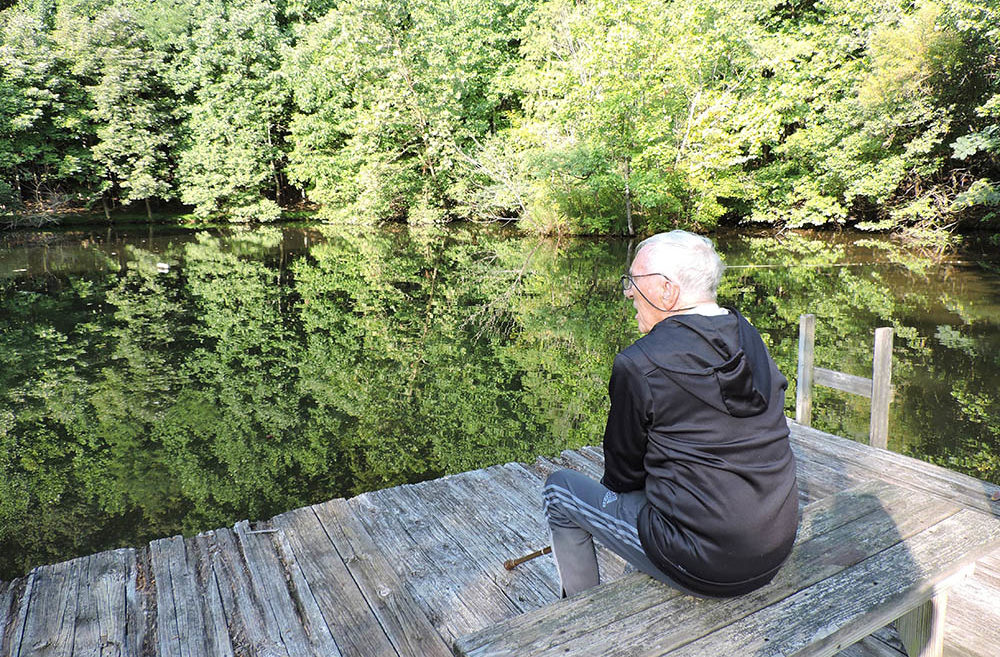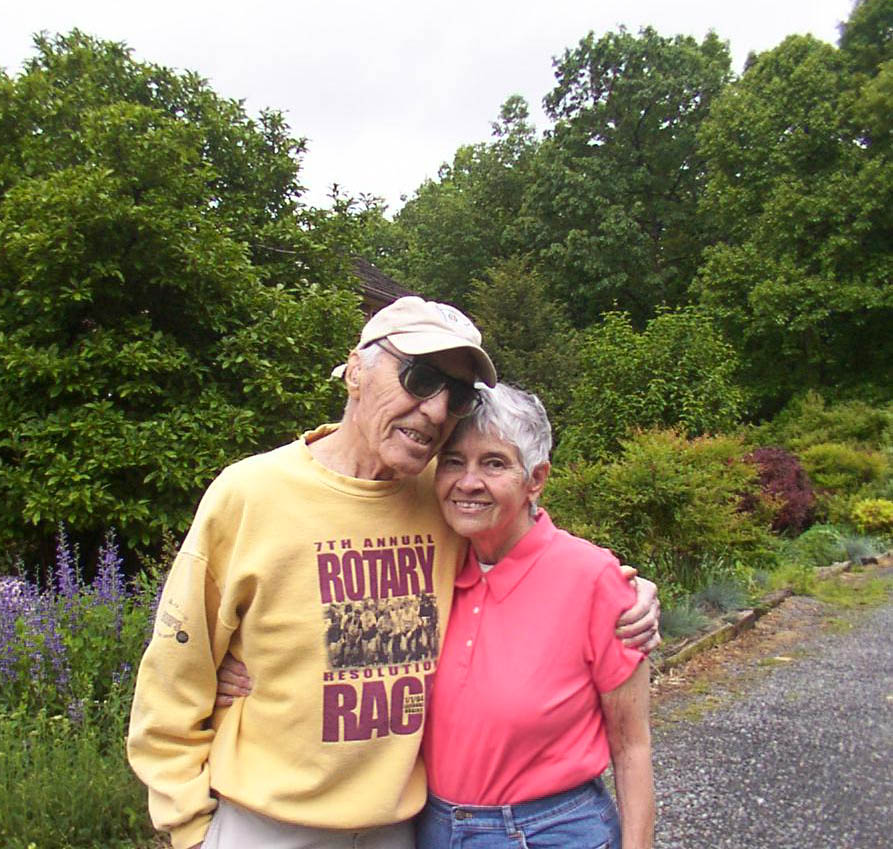
Carl and Elise Siebentritt’s 29-acre “mountain oasis,” two miles west of Lucketts along the Catoctin ridge and 3.5 miles northeast of Waterford in Loudoun County, was the hub and the heart of their large family for more than 30 years. Daughter Heidi and her husband held their wedding party there. Eldest son Carl III was married there and made it “home base” between overseas assignments with the State Department. Two other siblings, in Maryland and Georgia, moved their families in for a few years to help care for Elise and Carl in the years before each passed away. All 13 grandchildren and one great grandchild knew the woods like the backs of their hands from years of hiking, foraging, and camping.

“There’s a tree in front of the house that my youngest daughter would always climb,” Heidi said. “Everybody had their favorite spot; mine was the woods. On holidays when we would all gather as a family, we would walk through the woods no matter how cold it was. Like the ancient custom of walking the geographic boundaries of a village, it was sort of our way of claiming that place as our own.”
Carl, who ran the nuclear physics lab at Mount Weather, and Elise, a pastoral counselor and family therapist, moved to western Loudoun in 1988 to escape the rampant development happening around them in McLean. Conserving the property always loomed large in their minds. About four years before Carl passed away, the family all came together to talk about what he’d like to see happen to the property.
He didn’t want to leave until they “carried him out feet first.” He wanted to keep the land intact. And he wanted the property to stay in the family. Five of his six children had established lives elsewhere, and the house was larger than Heidi and her family were comfortable with, so they briefly considered a tiny subdivision of the property for a little family cottage. “But as we worked through where it could be sited and how it could be accessed, we realized we’d be destroying what we loved most about the property. We all came to the conclusion that while we might not be able to keep it in the family, we could at least keep it together with a conservation easement.”
Heidi immediately thought of The Piedmont Environmental Council, having worked with PEC’s conservation director, Mike Kane, at Loudoun County years before. Kane and PEC Field Representative Tracy Lind visited the property to meet Carl. He told them of foraging on the mountainside, which was full of morels and chanterelles, paw paws and berries. Every night after work, he’d walk the woods with his dogs. There were always turtles and fish in the pond, where the family often fished and kayaked and swam. Before Elise became ill, the two walked the trails daily; later, they loved sitting on the deck watching the birds. “It was the wildlife, the streams, the pond, and the trees Carl wanted to protect more than anything,” said Lind, “and his stories really provided guidance on what direction the easement should go.”
As Heidi and Lind worked through the process of putting a conservation easement on the property, Carl passed away at the age of 96. But completing the easement was a unanimous decision for the family. “We all knew this was what Dad wanted. It was closure for us in a lot of ways; it would have felt like we were letting him down if we hadn’t followed through,” Heidi said.

Completed in 2020 with the help of a grant from PEC’s Catoctin Creek Fund, the easement now permanently protects the forest, streams and integrity of the property’s 29 acres. True to Carl’s wishes, no structures may be built within the forested area, and the forest must remain intact unless tree removal is needed to improve wildlife habitat or remove diseased or invasive plants. A 100-foot forested buffer must remain along the banks of the two intermittent streams that run down the mountainside and most of the pond. They left about 2.5 acres outside the forest protection area to accommodate a future owner’s need for a home and small accessory structures and so that new owners could use the pond for recreation just as they did.
The family’s decision to conserve this land is a great example of the outsized public benefits of conservation, Kane said. “Protection of the streams where they begin is particularly important here, because as they flow downstream to the Potomac River, they cross dozens of properties in areas with sensitive limestone geology, where pollution can jeopardize the safety and availability of water for people and livestock,” he said.
Carl and Elise’s mountain oasis is now being enjoyed by a new owner who was in no way deterred by the conservation easement. Some people worry that a conservation easement will make land harder to sell, but there are many people whose plans for a property align perfectly with protections on the land.
Currently, theirs is the only protected property in an area with fairly generous development rights, but Heidi said she hopes it’s only the first. “I know Dad talked with neighbors over the course of his ownership about not developing that area and about saving the woods in perpetuity somehow. So hopefully, our conservation will inspire others,” she said.
Kane said that Loudoun County’s recent pursuit of programs to encourage conservation easements could spur additional land protections there. In some cases, the county’s Conservation Easement Assistance Program, implemented in 2019, provides grant funding to help cover some associated costs, such as appraisals, real estate attorney fees and title searches. The county is also studying a Purchase of Development Rights program, whereby the county buys development rights from a land owner and retires them.
“I know my dad is tickled pink right now,” Heidi said. “Some of the last conversations I had with him were about where we were with the easement. There’s an American Chestnut tree there in the woods that was of special importance to him. To know that it will be there for the rest of its natural life, along with the pawpaws, the pond with its fish, mom’s meditation garden above the pond, that somebody will always be picking pears and figs—I know he would be thrilled.”
This article was written by Cindy Sabato and appeared in The Piedmont Environmental Council’s spring 2021 member newsletter, The Piedmont View. If you’d like to become a PEC member or renew your membership, please visit pecva.org/join.
